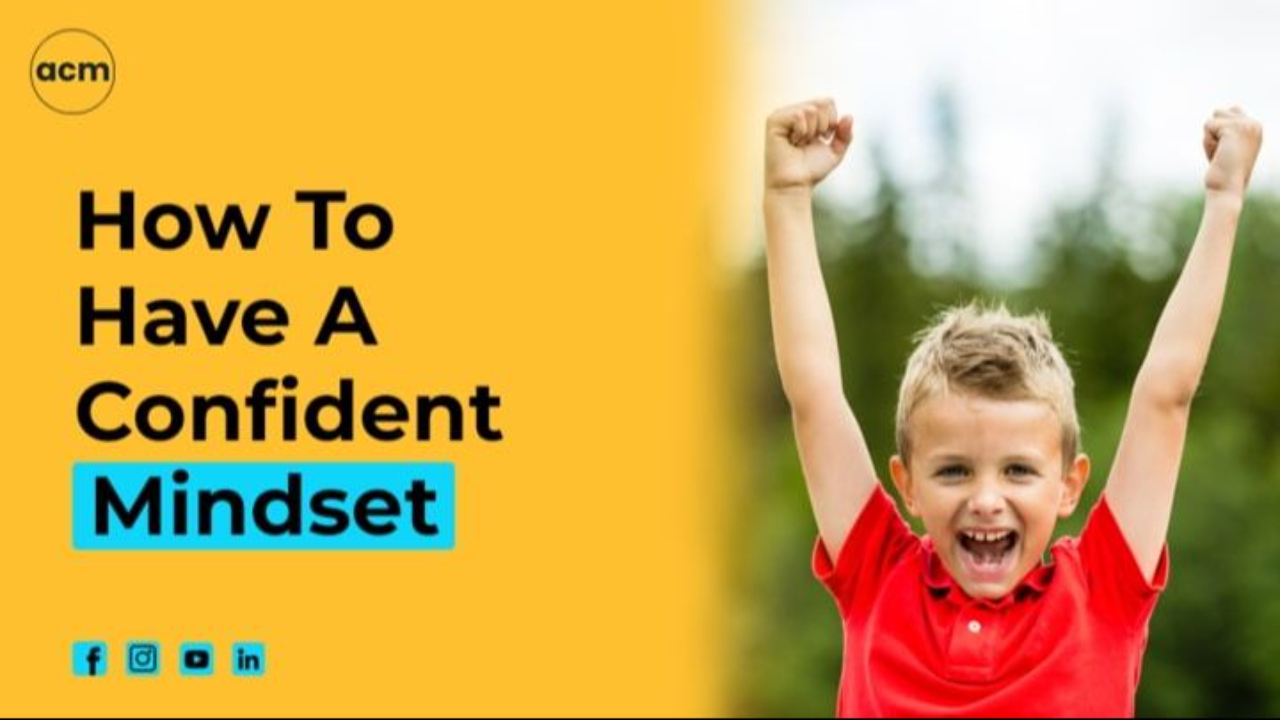
How to Have A Confident Mindset
Apr 02, 2025Building a confident mindset is essential for facing life challenges and pursuing your goals. But, the question is, how do you develop a confident mindset? The answer is simple: through consistent actions of practice. It all starts with practicing things like self-care, being kind to yourself and others, facing your fears, and positive self-talk. It’s also important to set realistic goals and set healthy boundaries. Let’s explore these strategies in detail.
Practical Tips to Build a Confident Mindset
Tip 1. Take Care of Your Body
Confidence and how you take care of yourself are connected because when you take care of yourself, you feel good about yourself.
Some ways to do this are by:
- Eating Nutritious Foods: A nutritious diet that includes fruits, vegetables, and lean proteins can help you feel good and confident while reinforcing a stronger sense of self.
- Exercising Regularly: Working out is important for physical and mental wellness. A simple workout routine can strengthen your body and mind while strengthening confidence.
- Getting Enough Sleep: Adequate sleep is important to your emotional health beacuse it promotes resilience and optimism, which in turn enhances self-esteem. In contrast, poor sleep causes irritability and lowers confidence.
- Practicing Relaxation: Meditation or yoga is a great way to stop overthinking and reconnect with yourself. It can also help you manage your negative thoughts and become more confident and relaxed.
Tip 2. Be Compassionate Toward Yourself
Self-compassion is another key to building confidence. When you make a mistake, don’t criticize yourself.
You can also:
- Embrace Imperfection: Be patient with yourself, especially when you make mistakes. View setbacks as opportunities for learning and growth.
- Practice Positive Self-Talk: Shift negative self-talk to supportive and constructive thoughts. For example, instead of saying, “I’m not good enough,” think, “I am learning and growing every day.” By shifting your mindset you will become more resilient and confident, even in difficult situations.
Tip 3. Focus on Your Strengths
By doing activities that make you feel happy, you can boost your self-confidence. You naturally feel more confident when you engage in things you’re good at.
You should:
- Identify Your Strengths: Recognize what you’re naturally good at, like problem-solving, communication, or creativity. When you focus on your strengths, your confidence grows. For example, if you’re a great writer, writing more often can make you feel accomplished and self-assured.
- Develop Your Skills: Once you know your strengths, practice and refine them. The more you improve, the more your confidence will grow. For instance, if you’re good at public speaking, participating in speeches or presentations can strengthen your skills and boost your self-esteem.
Tip 4. Face Your Fears
Facing your fears helps you reduce self-doubt and can boost your confidence, even if it initially feels uncomfortable.
Here’s how:
- Start with Small Steps: Push yourself out of your comfort zone gradually. If public speaking makes you nervous, begin by speaking in front of small groups or practicing alone. Each time you face a fear, your confidence grows.
- Learn from Mistakes: Failure is part of growth. Every time you step outside your comfort zone, you learn and improve. Embracing this mindset helps you overcome fear and build confidence with each new challenge.
Tip 5. Have the Power to Say “No”
Setting healthy boundaries is another way to develop self-esteem.
You should consider:
- Protecting Your Energy: If activities or relationships drain your positive energy, consider setting boundaries and saying “no”. It’s okay to focus on what makes you feel good.
Tip 6. Set Realistic Goals
Setting realistic and achievable goals can improve your self-worth and boost your confidence.
Here’s how to do this:
- Breaking Goals into Manageable Steps: Set smaller, achievable milestones rather than working on a hard-to-achieve goal.
- Celebrating Your Successes: After you complete a goal, no matter how small, celebrate your achievements.
Confident vs. Not Confidence: How to Identify?
Knowing how a person with self-confidence differs from a more insecure individual may be helpful when learning to be more confident. Here are some clear differences:
|
Confident |
Not Confident |
|
Optimistic |
Pessimistic |
|
Open-minded |
Close-minded |
|
Decisive |
Indecisive |
|
Take risks |
Fear change |
|
Admit mistakes |
Blame others |
|
Take responsibility |
Make excuses |
|
Celebrate others' success |
Judge and envy others |
|
Always learn and grow |
Resist learning new things |
|
Embrace flaws |
Conceal flaws |
How to Appear Confident
Here are some effective tips to appear confident:
- Good Posture: Maintain good posture by standing straight with your shoulders back and your head high.
- Hand Gestures: Make use of your hands by using purposeful hand gestures. Try not to put them in your pockets or fidget, as this indicates nervousness.
- Facial Expressions: Greet others with a friendly smile and do not appear unfocused. Doing so will help you come off as friendly and engaged.
- Eye Contact: Maintaining eye contact shows engagement.
- Body Language: Mirror others’ postures and gestures to build connection and appear more self-assured.
Wrap Up
Developing a confident mindset is important in navigating life transitions and overcoming setbacks. To develop this mindset, you can start by taking care of yourself by eating well, exercising, meditation, and sleeping well. You can also practice positive self-talk and gratitude toward yourself. And finally, you can face your fears and do things you enjoy and set realistic goals for yourself..
If you want expert help and ongoing support to start developing confidence, you can connect with Namita Prasad, the founder of A Confident Mindset™.

